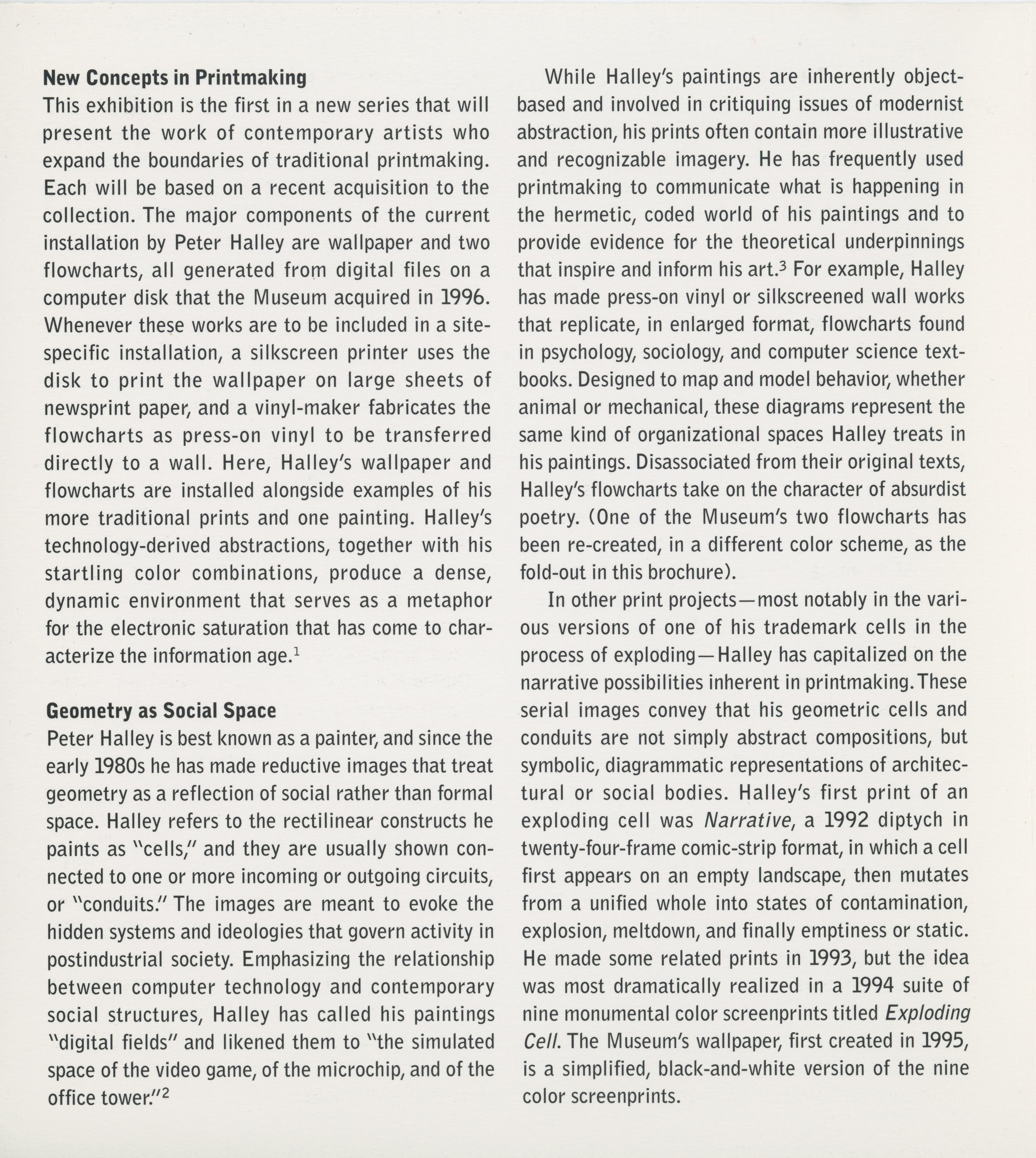Ephemera: Exhibition Cards, Posters, and Invitations
Drawn from a trove of over 500 exhibition ephemera, this curated selection of printed material charts the evolving trajectory of Peter Halley’s exhibition history. These cards—at once promotional tools and historical markers—offer a visual record of Halley’s participation in landmark solo and group shows across decades. Included here are invitations to exhibitions organized by curators like Robert Nickas and Collins & Milazzo, as well as materials from Halley’s recent retrospective at the Musée d’Art Moderne Grand-Duc Jean in Luxembourg, capturing both his critical emergence and enduring relevance.
1979 - 1989
This collection focus presents a geographic and institutional snapshot of Peter Halley’s rapid rise during the 1980s. Though visually minimal, the cards mark his growing presence across key galleries, from early shows at International With Monument in New York to major exhibitions with Sonnabend and Galerie Bruno Bischofberger. Together, they trace the expanding reach of Halley’s conceptual project within a shifting global art landscape.
Posters
This collection focus features a selection of exhibition posters from the 1990s to the present, offering a more vibrant counterpoint to the understated showcards of the previous decade. With bold colors and striking layouts, these posters not only promote Halley’s exhibitions but echo the evolution of his visual language—mirroring the intensity, structure, and playful rigidity of the work itself. Together, they chart the artist’s continued engagement with cells, conduits, and prisons.
Booklets
This final collection focus turns to the booklets that have accompanied Peter Halley’s exhibitions, often authored by Halley himself or by curators and critics closely engaged with his work. More than simple supplements, these texts offer deeper insight into the theoretical frameworks that underpin his practice—mapping the evolving ideas, references, and contexts that have shaped his career. Together, they reveal the intellectual architecture behind the visual language.






































